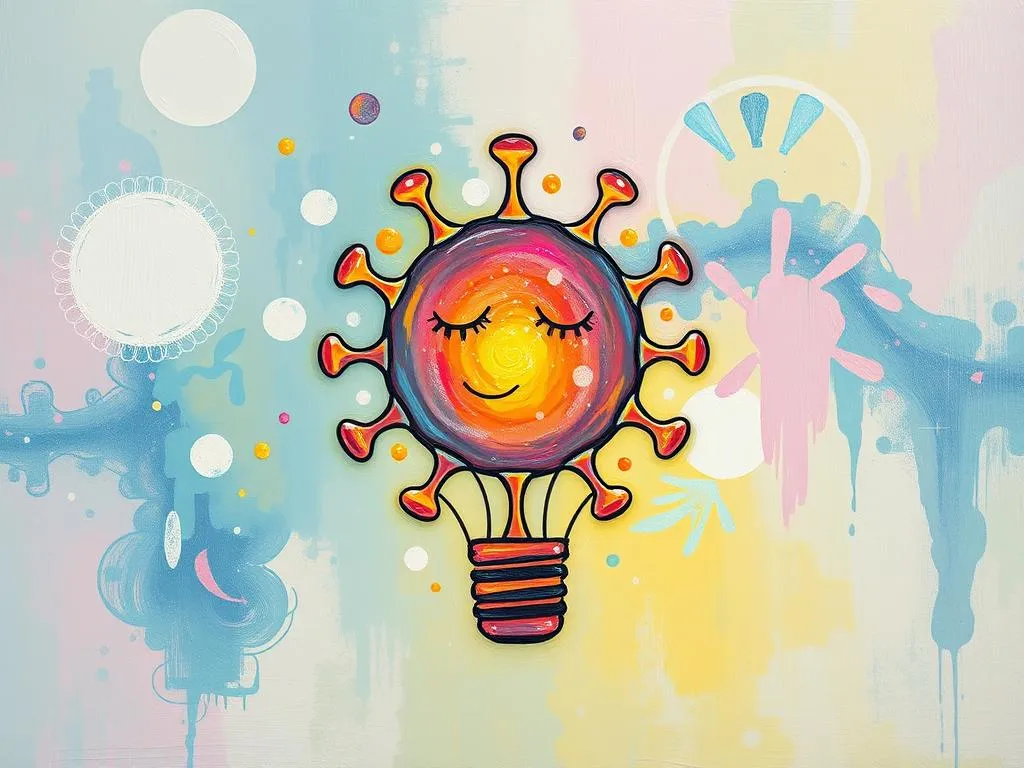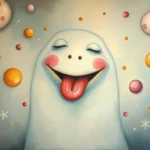
Have you ever woken up from a dream so vivid that it lingered in your mind long after the sun came up? Perhaps you found yourself in an unfamiliar landscape, encountering strange beings or objects that seemed to hold a deeper meaning. Dreams, those enigmatic experiences we traverse each night, are often a reflection of our subconscious, weaving together elements from our waking lives, emotions, and cultural symbols. As we delve into the world of dream symbols, we might find that these nocturnal narratives offer us more than just fleeting entertainment; they can serve as powerful guides for our waking journeys.
In the age of social media, certain dream symbols have gone viral, capturing the imagination of dreamers across cultures. From the classic flying dream to the more contemporary “falling” scenarios, these symbols are ripe for analysis. So, grab a cup of tea, and let’s explore how these dream symbols can reveal insights about your life, relationships, and personal growth.
Dreamscapes Unraveled: The Language of Symbols
Dream symbols are like a language of their own, rich with meaning and nuance. Each symbol can be viewed through various lenses, including psychological, cultural, and personal perspectives. For instance, consider the common dream of flying. In many cultures, flying represents freedom and the desire to escape from daily burdens. Yet, in psychological terms, it can signify a sense of empowerment or transcendence, suggesting that you are rising above challenges in your life.
Similarly, dreams about water, whether it’s a gentle stream or a raging ocean, often symbolize emotions. Water can be a catalyst for healing in dreams, representing the ebb and flow of feelings. In some traditions, water serves as a cleansing force, washing away negativity and allowing for renewal. Thus, when you dream of water, consider how you might be navigating your emotional landscape—are you feeling overwhelmed, or are you seeking solace?
Another fascinating symbol is the snake. Across various cultures, snakes can represent both danger and transformation. In some contexts, they symbolize healing and rebirth, while in others, they might be a warning sign of deceit or hidden fears. When interpreting a snake dream, think about your current life circumstances—are there elements that require attention, or are you undergoing significant change?
Let’s not forget the house—a prevalent symbol in dreams that represents the self. Each room can reflect different aspects of your personality or emotional state. Are you exploring the basement, where hidden fears reside, or perhaps the attic, where memories are stored? Your journey through the house can reveal much about your inner world and areas that may need nurturing or exploration.
Finally, consider the symbol of keys. These represent access and knowledge, often indicating that you hold the power to unlock new opportunities or insights in your life. If you dream of losing keys, it may suggest feelings of being trapped or unable to reach certain aspects of yourself or your potential. Reflecting on these symbols can lead to self-discovery and renewed clarity.
Dreaming in Color: Scenarios from the Dream World
Let’s dive deeper into the dream realm by examining some scenarios that may resonate with you. Each scenario not only highlights the importance of context in dream interpretation but also encourages you to draw parallels with your own life.
-
Flying Over a City: You find yourself soaring above a bustling city, feeling exhilarated and free. As you look down, you notice familiar landmarks, but they seem smaller than life. This dream may indicate that you’re gaining a new perspective on your life—perhaps you’re overcoming challenges or finding solutions to problems that once felt monumental. Reflect on areas where you’ve recently felt empowered.
-
Drowning in a Deep Ocean: In this dream, you’re submerged in dark waters, struggling to stay afloat. The weight of the water seems to press down on you. This scenario could symbolize feeling overwhelmed by emotions or situations in your waking life. It’s a call to acknowledge your feelings and seek support or strategies to navigate through them.
-
Discovering Hidden Rooms in Your House: You wander through your childhood home only to discover hidden rooms filled with forgotten treasures. Each room reveals memories and emotions long buried. This dream suggests a desire to explore your past and understand how it shapes your current identity. It may be time to confront unresolved issues or embrace aspects of yourself you’ve neglected.
-
Chasing Someone Through a Maze: You find yourself in a labyrinth, chasing someone who seems just out of reach. This scenario often reflects feelings of anxiety or insecurity in your relationships. It could also signify a pursuit of something elusive in your life—perhaps a goal or a deeper connection. Consider what you might be chasing and whether it truly aligns with your values.
-
Losing Your Teeth: In this unsettling dream, you look in the mirror only to see your teeth crumbling away. This common nightmare often relates to feelings of insecurity or a fear of aging. It may also symbolize a loss of power or control, prompting you to assess areas in your life where you feel vulnerable.
These scenarios illustrate how our dreams can mirror our waking experiences, serving as windows into our fears, desires, and personal growth. As you reflect on your own dreams, think about how these scenarios may relate to your current life situation, and what insights they might unveil.
Awakening Potential: The Journey of Self-Discovery
As we explore the rich tapestry of dream symbolism, it becomes clear that these nocturnal narratives are not just random images but are deeply intertwined with our personal growth. Engaging with your dreams can be a powerful tool for self-discovery and transformation.
Dreams encourage us to confront our innermost fears and desires. Keeping a dream journal is a practical way to track recurring symbols and themes. By writing down your dreams immediately upon waking, you can capture the raw emotions and vivid details that might otherwise slip away. Over time, patterns may emerge, revealing aspects of your life that deserve attention.
Additionally, consider the cultural context of your dreams. Different cultures interpret symbols uniquely, and understanding these perspectives can enrich your interpretation. For example, in some Indigenous cultures, dreaming is viewed as a vital link to the spirit world, offering guidance and wisdom. This approach encourages a reverence for dreams as sacred experiences that connect us to something greater.
Moreover, dreams can challenge us to take action in our waking lives. If you frequently dream of flying, perhaps it’s time to pursue your passions or take risks that lead to personal freedom. Conversely, if you find yourself drowning in your dreams, consider what steps you can take to manage stress or address emotional challenges. Your dreams may be urging you to reclaim your power and make necessary changes.
Ultimately, dreams invite us to explore our inner landscapes and embrace the journey of self-awareness. They can guide us toward healing, personal empowerment, and authenticity.
Next time you awaken from a dream that feels particularly poignant, take a moment to reflect. What messages are waiting for you to uncover? How can you translate the insights from your dreams into actionable steps in your waking life?
As you navigate this journey of self-discovery, remember that your dreams are not just fleeting images but profound reflections of your soul’s desires and challenges. Embrace them, learn from them, and allow them to guide you toward a more fulfilling life.
In the words of Carl Jung, “Your vision will become clear only when you can look into your own heart. Who looks outside, dreams; who looks inside, awakens.” So, let the symbols of your dreams inspire you to awaken to your true potential, and may your nights be filled with meaningful explorations that shape your days.







